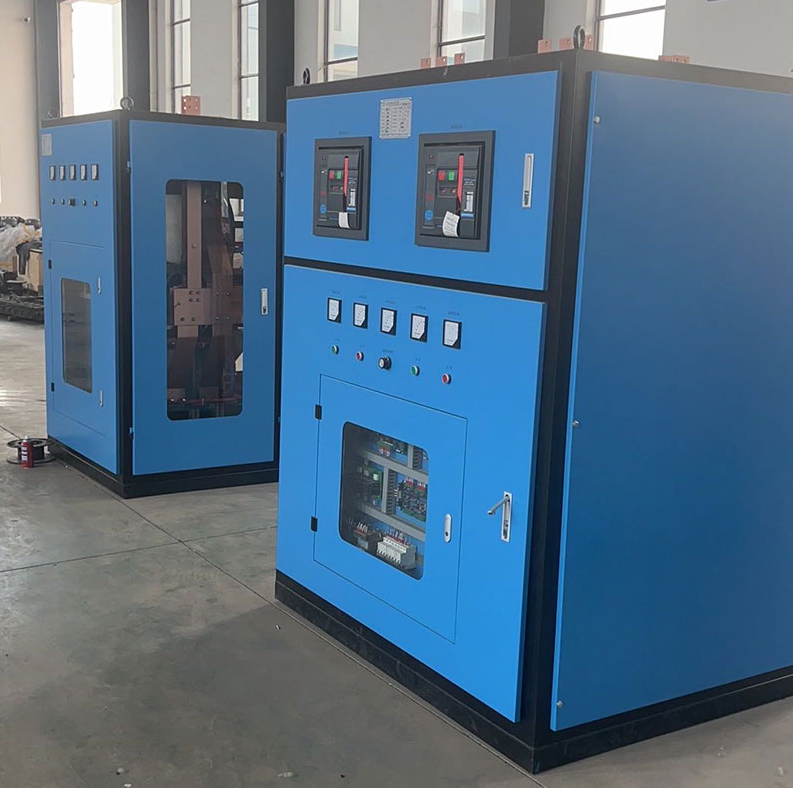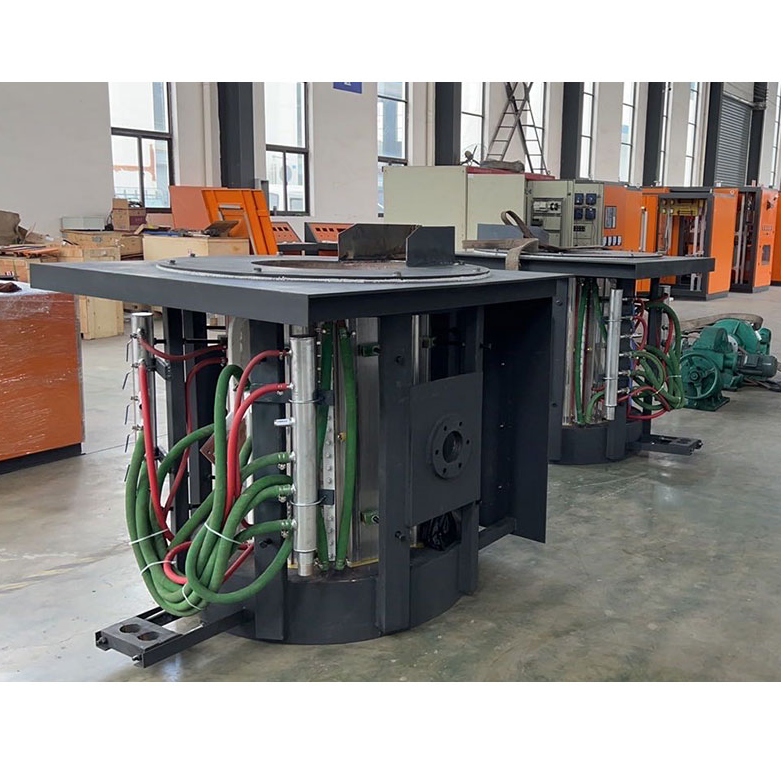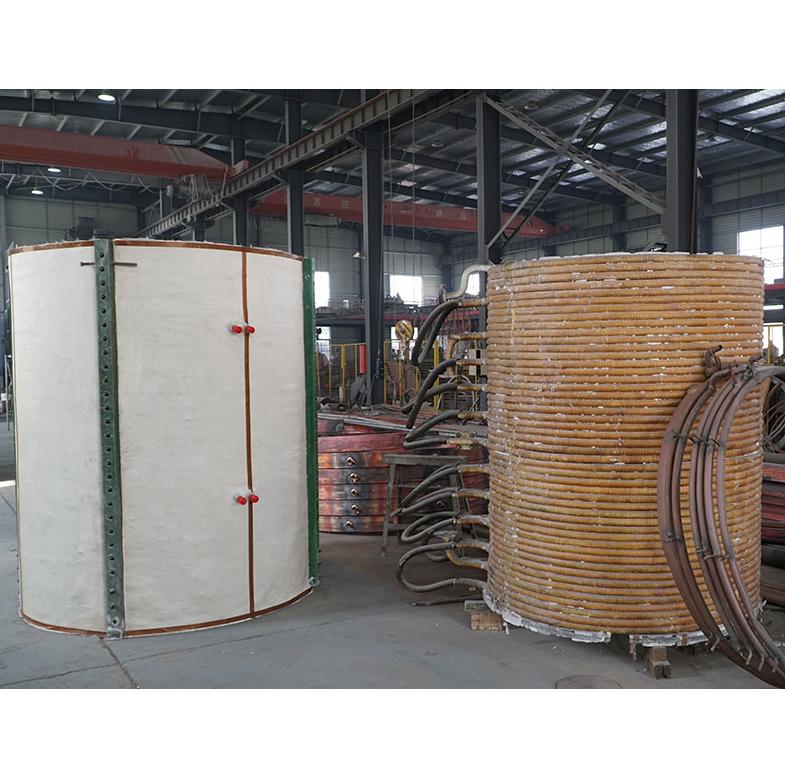Induction Melting Furnace Price: What’s Best for Your Business?
When deliberating over whether to invest in induction melting furnaces, one question that typically emerges at the forefront is: Is the expense truly justified? Given the multitude of Induction Melting Furnace Price points and the variety of models available in the market, it can become an overwhelming task to sift through the available options and pinpoint the optimal choice tailored to a company’s specific operational demands. This blog intends to clarify the intricacies surrounding induction melting furnace price by examining the key elements that drive costs and offering insights on how to make a financially sound purchase decision.
1. Decoding the Price of Induction Melting Furnaces: From Small-Scale Models to Large-Scale Industrial Units
Induction melting furnaces are engineered to accommodate a spectrum of operational scales—ranging from compact workshops to expansive industrial foundries. A comprehensive understanding of the Induction Melting Furnace Price disparities, which are heavily influenced by the size and capacity of these furnaces, is indispensable for making an informed purchase decision that aligns with business requirements.
Small-Scale Furnaces: Affordability and Utility for Precision Work
For small-scale applications such as jewelry manufacturing or modest metalworking facilities, the cost of induction melting furnaces typically falls within the range of $3,000 to $10,000. These models are specifically crafted for melting minor quantities of metal, generally between 1kg and 50kg, making them ideal for operations where precision and rapid melting cycles are paramount.
Mid-Sized Furnaces: A Synergy of Cost and Production Capacity
Induction melting furnaces designed for medium-scale production, with capacities reaching up to 500kg, usually range from $20,000 to $50,000. Often employed in medium-sized foundries, these units are optimized for melting non-ferrous metals like aluminum, copper, and brass. They strike a fine balance between power, efficiency, and production capacity, rendering them suitable for businesses that necessitate moderate throughput without compromising on performance.
Large-Scale Industrial Furnaces: High Costs for Advanced Features and Production Volume
For heavy-duty industrial applications, where melting capacities exceed 1,000kg, induction melting furnaces can command Induction Melting Furnace Price anywhere from $100,000 to $500,000 or even higher. Such industrial-scale models are typically equipped with state-of-the-art features such as automated controls, energy-efficient technologies, and enhanced safety mechanisms. The elevated Induction Melting Furnace Price tag is a reflection of their capability to handle high-volume production with exceptional precision, making them essential assets in industries like steelmaking and metal refining.
2. Key Determinants of Induction Melting Furnace Price
The pricing of induction melting furnaces is influenced by a multitude of factors. Gaining a solid understanding of these determinants will aid potential buyers in making astute decisions and ensuring they derive maximum value from their investment.
Technological Innovations and Power Systems
One of the most significant determinants of an Induction Melting Furnace Price is the level of technological sophistication integrated into its design. For example, furnaces employing advanced thyristor-based series resonance technology, such as those supplied by companies like Taizhou Hongkang Electric Co., Ltd., tend to be priced at a premium due to their superior efficiency, precision in control, and energy-saving properties. Furthermore, the nature of the power source, whether single-phase or three-phase, can also contribute to variations in pricing.
Furnace Capacity and Melting Velocity
The capacity of the furnace, measured by the amount of metal it can melt in a single cycle, directly impacts the cost. Larger furnaces that can handle higher volumes are typically more expensive due to the requirement for more robust components and enhanced durability. Additionally, furnaces engineered to achieve quicker melting times or support continuous production cycles come at a higher price, as they demand sophisticated cooling and insulation systems to maintain operational efficiency.
Compatibility with Various Materials and Customization Options
Induction melting furnaces vary in terms of their compatibility with different metals, such as iron, steel, aluminum, and copper. Models capable of accommodating a broader range of materials or featuring specialized designs for specific metals often carry a higher price tag. Similarly, customization options, such as unique coil designs or additional safety mechanisms, can further drive up the cost.
3. Effective Strategies for Negotiating the Best Price for an Induction Melting Furnace
Procuring an induction melting furnace represents a substantial investment, and securing the best possible Induction Melting Furnace Price entails more than a mere comparison of brands and models. Employing effective negotiation strategies can help secure favorable terms without sacrificing quality or essential features.
Gaining Insight into the Supplier’s Pricing Framework
Prior to entering negotiations, it is critical to delve into the supplier’s pricing framework. Suppliers like Taizhou Hongkang Electric Co., Ltd. often provide detailed breakdowns of their pricing based on factors such as furnace capacity, power output, and additional features. A thorough understanding of these variables can offer valuable leverage during negotiations and pinpoint areas where modifications can be requested.
Utilizing Bulk Purchases and Long-Term Commitments
If the intention is to purchase multiple units or to forge a long-term partnership, leveraging these factors can yield more advantageous pricing. Suppliers frequently offer discounts for bulk purchases or for committing to long-term supply agreements. Moreover, emphasizing the potential for repeat business can unlock customized pricing packages tailored to specific business needs.
Exploring Financing Options and Ancillary Support Services
An often-overlooked negotiation strategy is to inquire about financing options and after-sales support services. Certain suppliers may provide flexible payment terms or extend warranties, thereby reducing the initial financial burden. Additionally, negotiating for value-added services like installation support or on-site training can further augment the long-term value of the investment.
4. Technological Advancements and Their Influence on Induction Melting Furnace Price
Technological progress has profoundly shaped the design and functionality of induction melting furnaces, consequently impacting their Induction Melting Furnace Price. As manufacturers integrate sophisticated electronics, automated features, and energy-efficient solutions, the initial cost of these furnaces has increased. Nonetheless, the long-term benefits, such as reduced energy consumption and maintenance expenses, often justify the higher upfront expenditure.
Thyristor Series Resonant Melting Furnaces: Pioneering Technological Advancements
Thyristor Series Resonant Melting Furnaces, offered by suppliers such as Taizhou Hongkang Electric Co., Ltd., epitomize cutting-edge technological innovation in the field. By leveraging the principles of series resonance and utilizing thyristor-based power electronics, these furnaces deliver unparalleled energy efficiency, reduced power consumption, and enhanced temperature control. This makes them particularly well-suited for high-precision applications like steelmaking and metal refining.
Automation and Smart Control Systems: Minimizing Operational Costs
Contemporary induction melting furnaces are equipped with automated control systems and smart features that streamline production processes and minimize the need for human intervention. Although these technological enhancements increase the initial purchase price, they contribute significantly to lower operational costs in the long run. For instance, smart sensors can monitor and adjust melting parameters in real-time, ensuring optimal performance while mitigating the risks associated with overheating or inefficiencies.
Prioritizing Energy Efficiency: A Long-Term Cost Reduction Strategy
Another critical factor influenced by technological advancements is energy efficiency. High-efficiency furnaces consume less electricity, leading to substantial savings in energy costs over time. Although these energy-efficient models come with a higher price tag, the reduction in energy expenses can make them an economically viable option for companies seeking to reduce their long-term operational costs.
5. Strategies for Purchasing Cost-Effective Induction Melting Furnaces
Businesses aiming to acquire induction melting furnaces without overspending have several strategies at their disposal that can help minimize costs while ensuring quality and performance.
Considering Refurbished or Pre-Owned Furnaces
One viable option for reducing costs is to explore refurbished or pre-owned furnaces. Many suppliers offer reconditioned units that have undergone thorough testing and certification for quality and performance. Although these units may not possess the latest features, they can serve as a practical solution for businesses operating under strict budget constraints.
Tailoring Furnace Specifications to Specific Requirements
Avoid the pitfall of overpaying for unnecessary features by meticulously assessing your production needs. Customizing the furnace to align with exact specifications can prevent overspending on advanced capabilities or excessive capacities that will not be fully utilized.
Partnering with a Reputable Supplier for Long-Term Value
Collaborating with a reputable supplier, such as Taizhou Hongkang Electric Co., Ltd., can ensure long-term cost savings. Reliable suppliers deliver high-quality equipment, reducing the risk of breakdowns and the need for costly repairs. Furthermore, comprehensive after-sales support can help sustain the furnace’s performance and extend its operational lifespan, providing enduring value for your investment.
Conclusion: Finding the Best Value in Induction Melting Furnaces
Navigating the complex landscape of induction melting furnace pricing can be a daunting task. However, with a thorough understanding of the various factors influencing costs and employing strategic negotiation techniques, businesses can secure the ideal furnace at the most favorable price. Whether considering an advanced Thyristor Series Resonant Melting Furnace or exploring more fundamental models, it is essential to evaluate both the upfront investment and the long-term benefits. Partnering with a reliable supplier and choosing the right technology will ensure that your investment significantly enhances production capabilities while optimizing overall operational efficiency.



